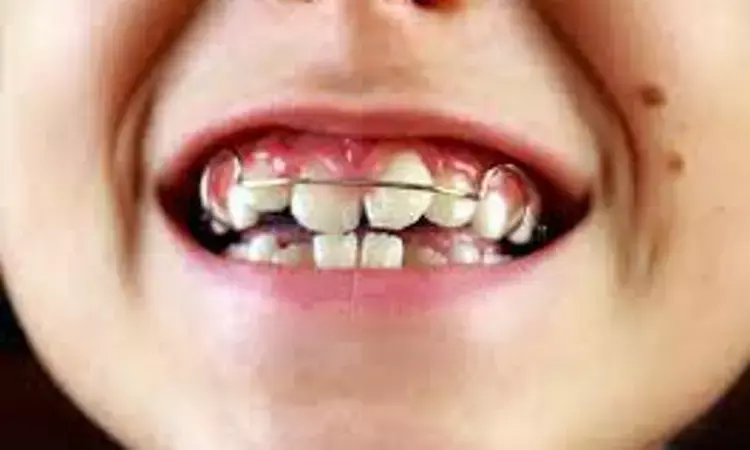- Home
- Medical news & Guidelines
- Anesthesiology
- Cardiology and CTVS
- Critical Care
- Dentistry
- Dermatology
- Diabetes and Endocrinology
- ENT
- Gastroenterology
- Medicine
- Nephrology
- Neurology
- Obstretics-Gynaecology
- Oncology
- Ophthalmology
- Orthopaedics
- Pediatrics-Neonatology
- Psychiatry
- Pulmonology
- Radiology
- Surgery
- Urology
- Laboratory Medicine
- Diet
- Nursing
- Paramedical
- Physiotherapy
- Health news
- Fact Check
- Bone Health Fact Check
- Brain Health Fact Check
- Cancer Related Fact Check
- Child Care Fact Check
- Dental and oral health fact check
- Diabetes and metabolic health fact check
- Diet and Nutrition Fact Check
- Eye and ENT Care Fact Check
- Fitness fact check
- Gut health fact check
- Heart health fact check
- Kidney health fact check
- Medical education fact check
- Men's health fact check
- Respiratory fact check
- Skin and hair care fact check
- Vaccine and Immunization fact check
- Women's health fact check
- AYUSH
- State News
- Andaman and Nicobar Islands
- Andhra Pradesh
- Arunachal Pradesh
- Assam
- Bihar
- Chandigarh
- Chattisgarh
- Dadra and Nagar Haveli
- Daman and Diu
- Delhi
- Goa
- Gujarat
- Haryana
- Himachal Pradesh
- Jammu & Kashmir
- Jharkhand
- Karnataka
- Kerala
- Ladakh
- Lakshadweep
- Madhya Pradesh
- Maharashtra
- Manipur
- Meghalaya
- Mizoram
- Nagaland
- Odisha
- Puducherry
- Punjab
- Rajasthan
- Sikkim
- Tamil Nadu
- Telangana
- Tripura
- Uttar Pradesh
- Uttrakhand
- West Bengal
- Medical Education
- Industry
Deleterious oral habits tied with different types of malocclusions in children

Dental malocclusions in the vertical, transverse, sagittal planes are linked with deleterious habits in pediatric patients according to a recent stud published in the BMC Oral Health.
Malocclusion is a misalignment of the upper and lower teeth, where an adequate gear of bone structures between the maxilla and jaw is not observed, resulting on the lack of an ideal function of the masticatory apparatus.
Malocclusion is highly reported among mixed dentition cases. Therefore, we aimed to determine the relationship of dental malocclusions in the vertical, transverse, sagittal planes with deleterious habits in pediatric patients.
A cross-sectional analytical study was carried out on 155 children aged 6–12 years attended at the clinic of the School of Dentistry of Universidad Nacional Mayor de San Marcos in 2017.
The Results of the study are:
Among 155 evaluated patients, 45.3% had vertical malocclusion, 52.0% had sagittal malocclusion and 13.6% had transverse malocclusion. The most frequent type of malocclusion in the vertical plane was anterior deep bite (22.2%), in the transverse plane, the edge-to-edge bite (7.1%) and the anterior crossbite (6.5%) were less frequent. Finally, in the sagittal plane, Class II Div 1 (20%) and Class III (20.7%) were the most frequent. Among the most common deleterious habits, anteroposition (58.7%) and mixed breathing (51.0%) were observed in contrast to the habit of retroposition, lip sucking and mouth breathing, which were the least frequent. Considering age and sex, children who have an atypical swallowing habit are more likely to have malocclusion in all three planes of space.
Thus, it is concluded that there is an association between the deleterious habits with the different types of malocclusions in the different planes of the space, being the atypical swallowing a habit that should be early diagnosed and treated interdisciplinary.
Reference:
Deleterious oral habits related to vertical, transverse and sagittal dental malocclusion in pediatric patients by Lourdes Hilda Gabriela Rodríguez-Olivos, et al. published in the BMC Oral Health.
https://bmcoralhealth.biomedcentral.com/articles/10.1186/s12903-022-02122-4
Dr. Shravani Dali has completed her BDS from Pravara institute of medical sciences, loni. Following which she extensively worked in the healthcare sector for 2+ years. She has been actively involved in writing blogs in field of health and wellness. Currently she is pursuing her Masters of public health-health administration from Tata institute of social sciences. She can be contacted at editorial@medicaldialogues.in.
Dr Kamal Kant Kohli-MBBS, DTCD- a chest specialist with more than 30 years of practice and a flair for writing clinical articles, Dr Kamal Kant Kohli joined Medical Dialogues as a Chief Editor of Medical News. Besides writing articles, as an editor, he proofreads and verifies all the medical content published on Medical Dialogues including those coming from journals, studies,medical conferences,guidelines etc. Email: drkohli@medicaldialogues.in. Contact no. 011-43720751


